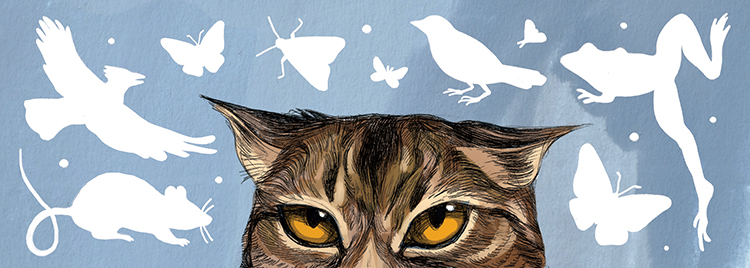 story by bernard brown | photo by nicholas a. tonelliYou know Chestnut, the street that runs west to east between Market and Walnut? Have you ever seen a chestnut tree? Locusts, pines, spruces and walnuts are all around, even if you’ve never noticed them. But you’d be hard pressed to find a chestnut tree. They’re almost all dead.
story by bernard brown | photo by nicholas a. tonelliYou know Chestnut, the street that runs west to east between Market and Walnut? Have you ever seen a chestnut tree? Locusts, pines, spruces and walnuts are all around, even if you’ve never noticed them. But you’d be hard pressed to find a chestnut tree. They’re almost all dead.
Back when William Penn named Philly’s streets in 1682, the chestnut was as common as the oak and maple, making up something like one-quarter of our upland hardwood forests. Chestnuts were big: shooting up as tall as 100 feet from the ground with trunks bulging up to 10 feet in diameter. Into the early 20th century they gave us sturdy lumber and yummy nuts, and were common enough to make their way into an enduring Christmas reference (the chestnuts you can roast today come from overseas). Then the trees—virtually all 4 billion of them—started dying from an introduced chestnut blight; their bark puffed up in a lethal cracking, girdling ring. By the 1940s, they were gone.
We are witnessing an age of extinction, much of it wrought by exotic agents we have unleashed upon virgin species. Case in point: Right now the woolly adelgid (a tiny Japanese insect) is slowly sucking the life from the Pennsylvania state tree, the dark, brooding eastern hemlock. The fate of the American chestnut reminds us of what is at stake, of the hole left in the landscape and our culture when something so ordinary as to be taken for granted is erased.
The American chestnut isn’t quite extinct. I nearly tripped over a sapling last summer on the side of a ridge a couple hours north of Philadelphia. I’m a big fan of a tree called the chestnut oak, which grows thick on that mountainside; the long, toothed leaves on this sapling, however, weren’t quite right. After a moment of staring at it, it hit me. The chestnut oak was named after the chestnut because, presumably, at the time everyone knew what a chestnut tree looked like. It’s telling that in this instance I had to make the identification in reverse. I took a few photos and kept hacking my way back to the car.
On my next trip, now able to recognize them, I saw more popping out of the forest. (Previously, I couldn’t see the trees for the forest?) It was enough to make me believe in a chestnut comeback—except for the malignant swelling that marred the ones wider than a few inches.
You, too, can see Chestnut saplings on your next hiking trip. Nearly 100 years after the blight swept through our forests, hundreds of millions of saplings spring from the fading root systems of their strangled, majestic former selves, lingering like ghosts, hoping to see justice done.
Their champion, the American Chestnut Foundation (ACF, manned by hundreds of incredibly patient volunteers), has been crossing our trees with blight-resistant Chinese chestnuts. They then repeatedly breed the offspring back to our trees to end up with trees that are, genetically, 94 percent American chestnut, but that carry the blight-resistant genes from the Chinese trees. Keep in mind that it can take a decade or more for a chestnut tree to produce nuts, making for a glacial-pace breeding process. It turns out I should have grabbed a few leaves on my hikes. Saplings identified by hikers can expand the ACF’s genetic base.
If you want to see the American chestnut coming back, head for Old City. The once mighty tree is taking one small step in its return through a sapling recently planted in the park below Independence Hall. The wee little tree has a lot of growing to do before we can declare it a complete success, but it shows that hope survives even in the midst of extinction.
Bernard Brown is an amateur field herper, part-time bureaucrat and director of the PB&J Campaign (pbjcampaign.org), a movement focused on the benefits of eating lower on the food chain. Read about his forays into the natural world at phillyherping.blogspot.com.




You can also find some American Chestnut hybrids at the Schuylkill Center for Environmental Education, in Roxborough. For more info on our trees, check out a recent NewsWorks story: http://www.newsworks.org/index.php/component/joomgallery/chestnut-trees-at-the-schuylkill-center
You can also find some American Chestnut hybrids at the Schuylkill Center for Environmental Education, in Roxborough. For more info on our trees, check out a recent NewsWorks story: http://www.newsworks.org/index.php/component/joomgallery/chestnut-trees-at-the-schuylkill-center